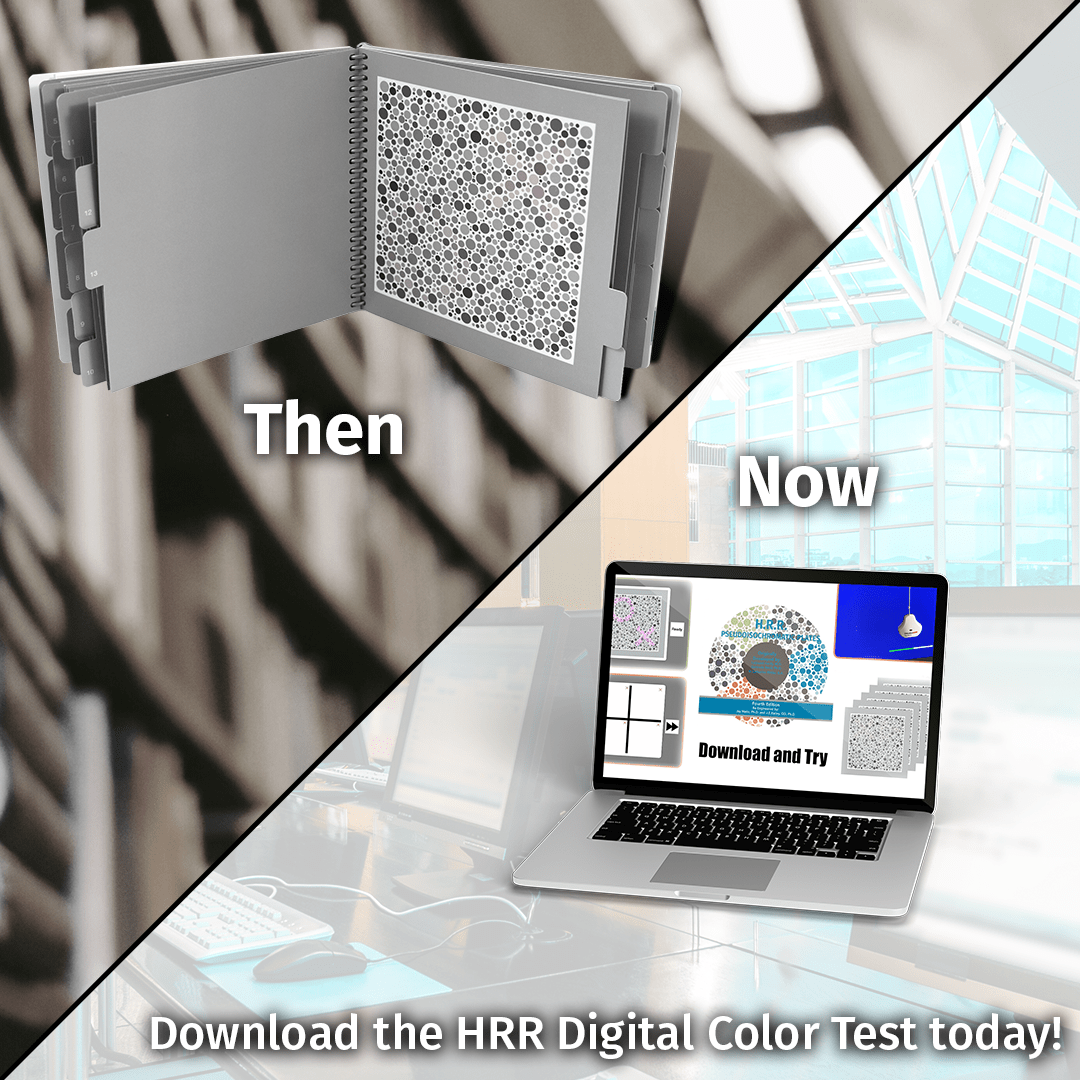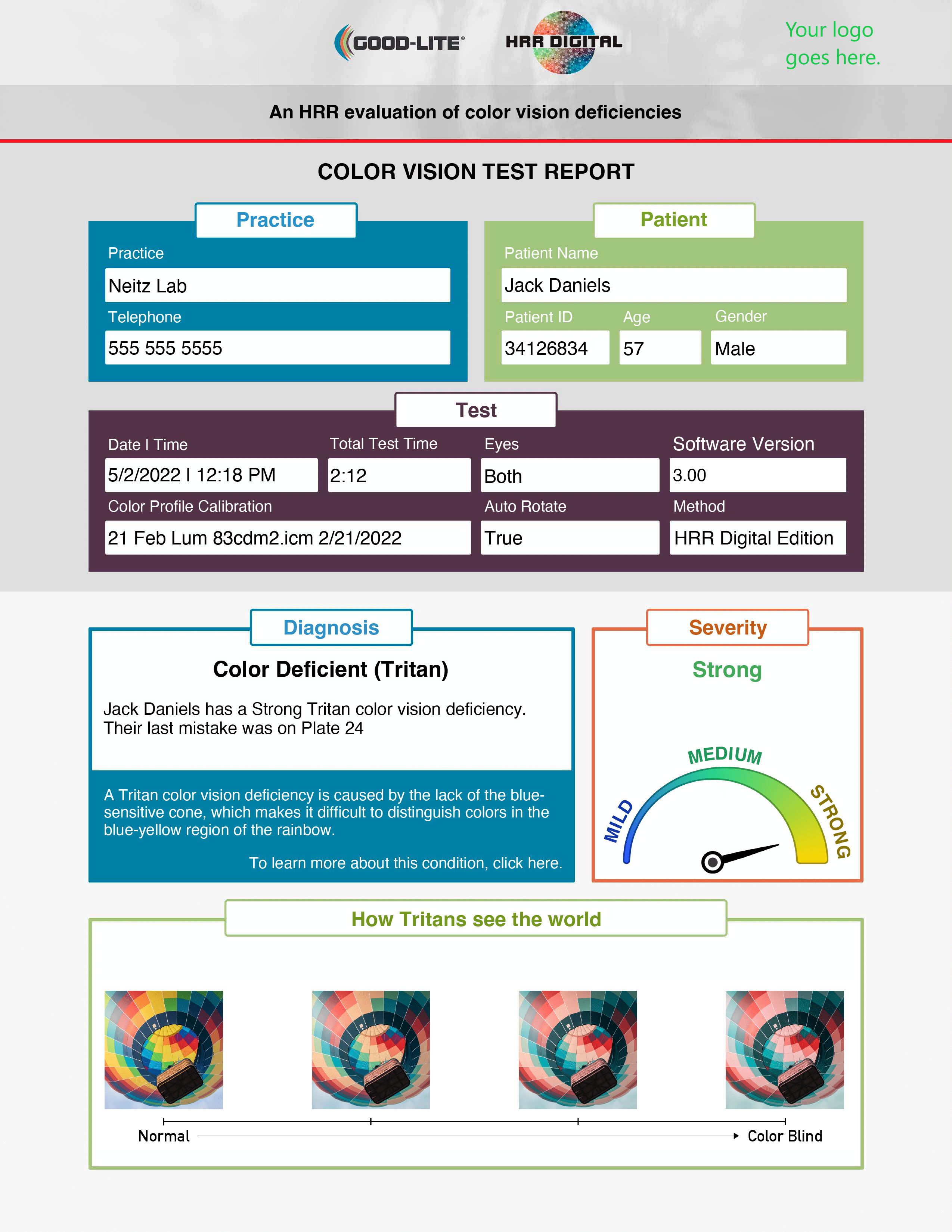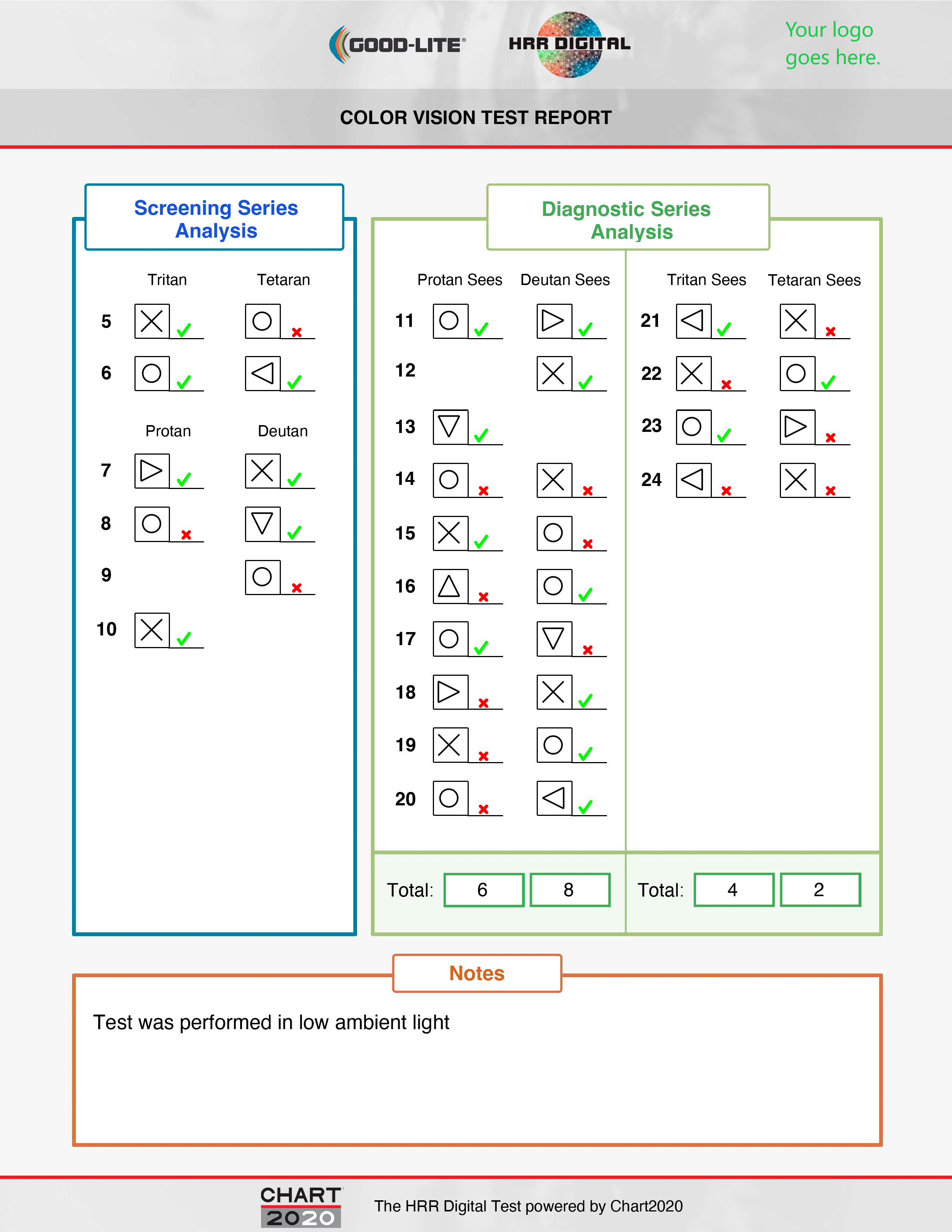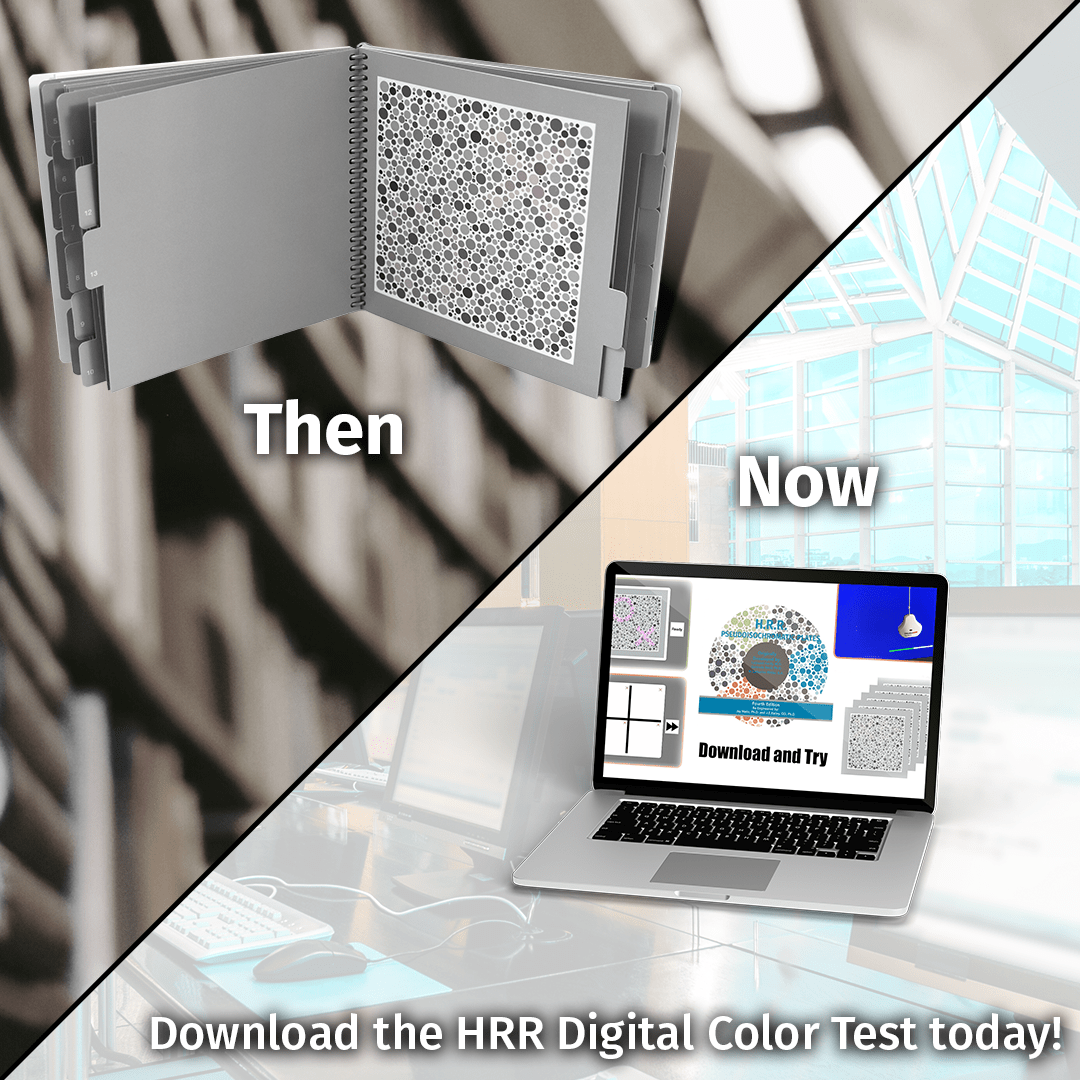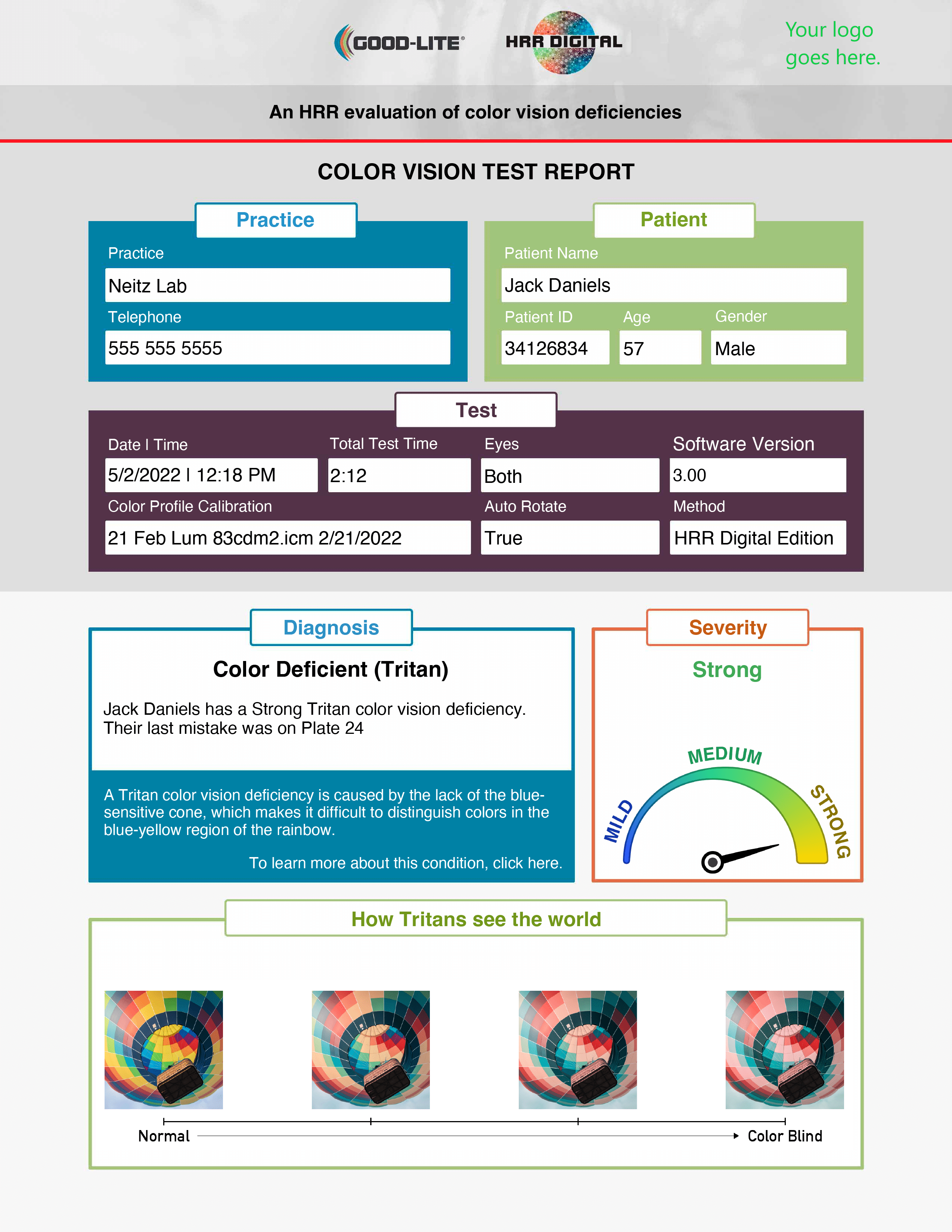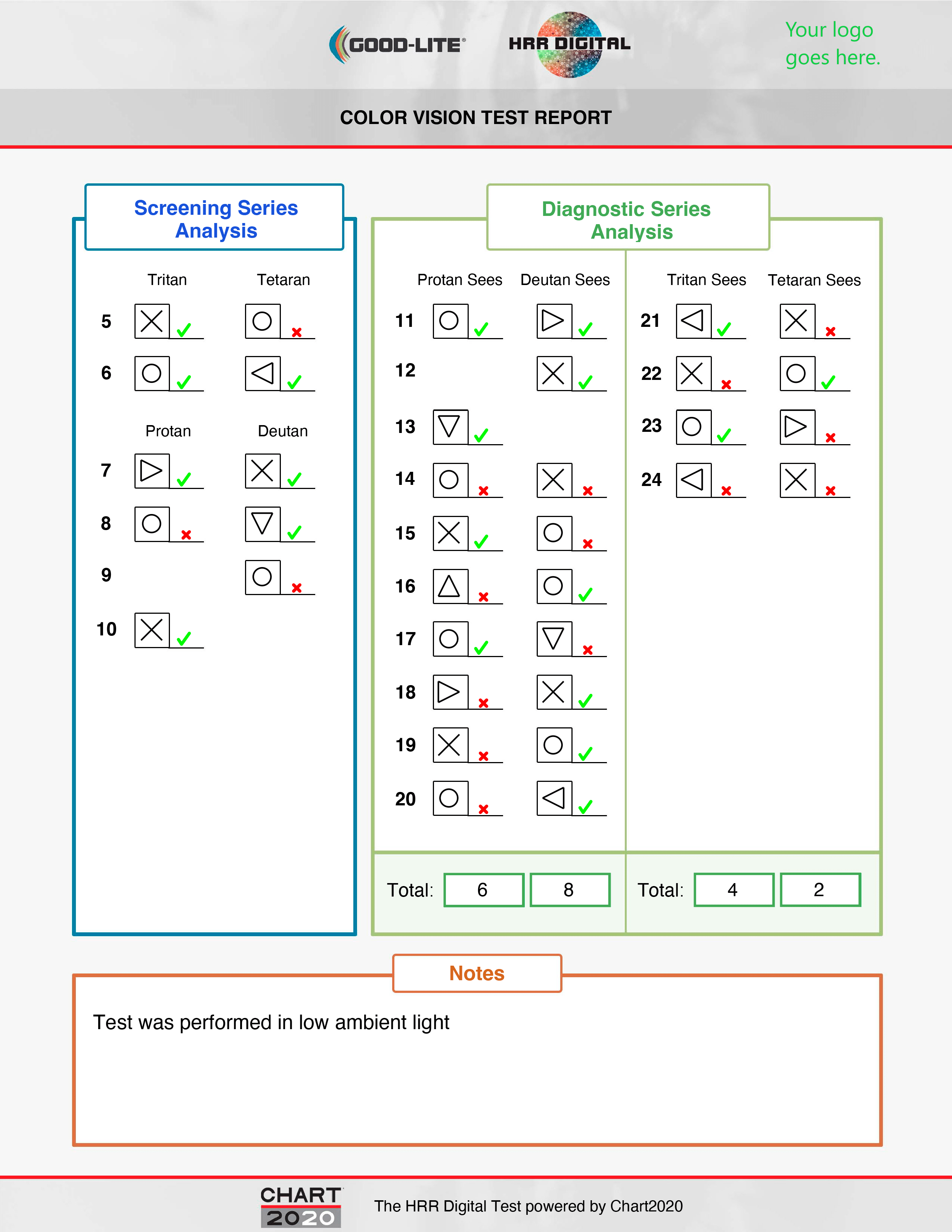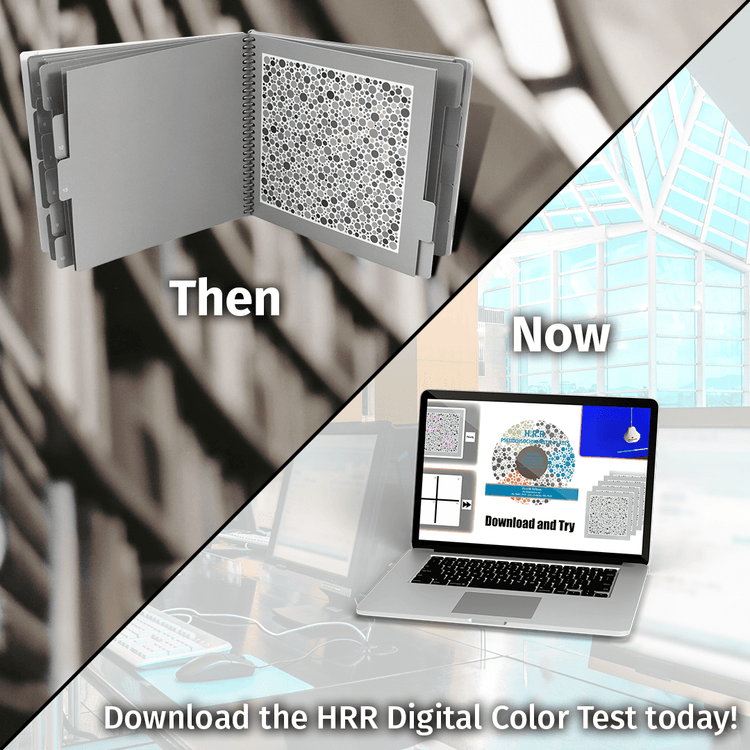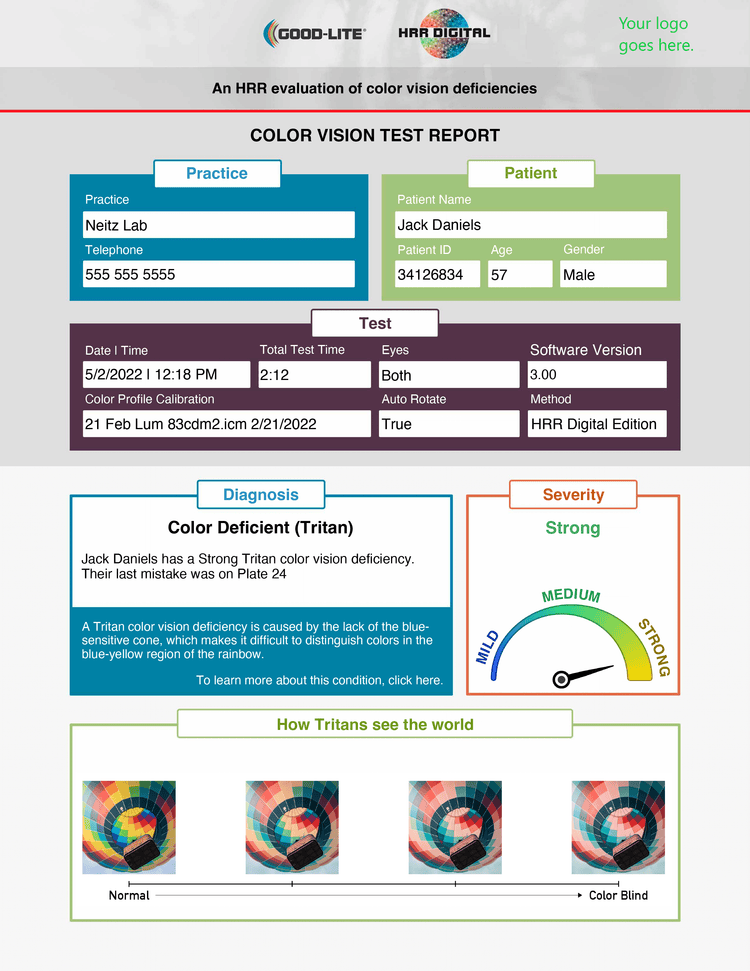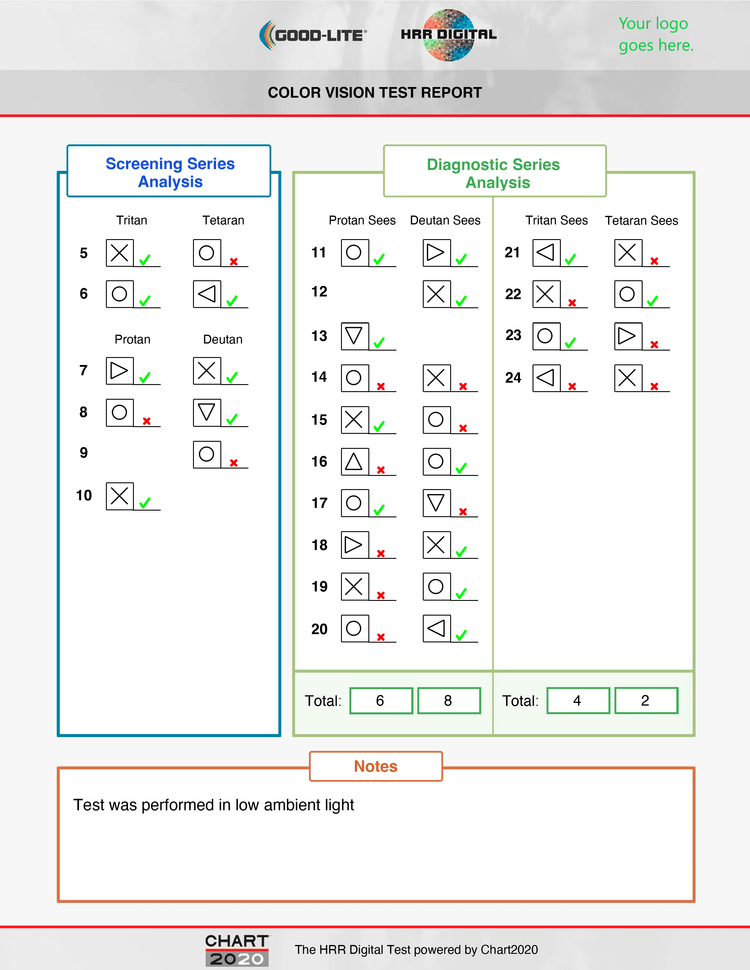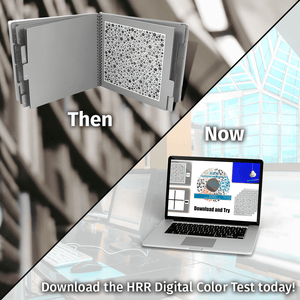
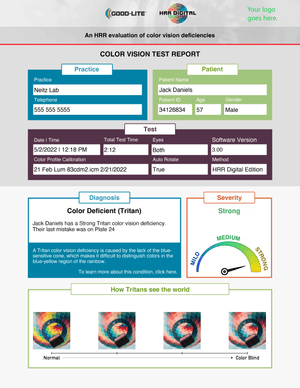
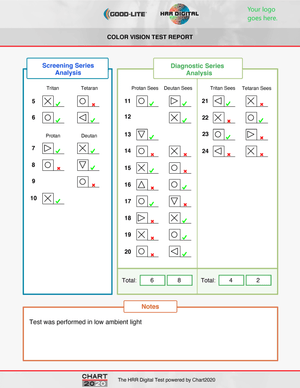



About
The HRR test is now available in a digital format that comes with many significant advantages
- The auto scored report tracks trends over time
- Patients can self-administer the test with an easy drag-and-drop interface
- Plates are auto rotated to prevent cheating and double-check errors
- A full diagnostic report is generated as a beautifully crafted PDF document that can be submitted to your EHR system
- Algorithms determine which plates to display, repeat and skip, making the test super-efficient and virtually eliminating administration errors
Here’s how it works:
After installation and initial color calibration the patient's details are captured. The test can be self-administered or a doctor or technician can assist.
The test starts by displaying the 4 demo plates. These plates help the patient familiarize themselves with the system while doubling as a positive and negative control. Each color plate is displayed for a maximum of 10 seconds after which it is replaced by an answering grid. The patient is required to drag and drop the symbols they saw on the plate into the 4 open slots in the quadrant, indicating the type and location of each symbol.
After completing the demo plates, the test is split into 2 phases. The first phase is made up of six screening plates, which test for the most common types of color vision deficiency. If the patient passes all 6 screening plates, the test ends and a report is produced.
If the patient fails the screening phase, the system presents an additional set of diagnostic plates that are tailored to the deficiency identified in phase one. Together, the screening and diagnostic plates determine both the type and severity of the patient’s color vision deficiency.
Mechanisms are in place to double check miscellaneous errors and ensure a correct diagnosis.
Monitor calibration with a DataColor Spyder X PRO colorimeter ensures correct confusion colors are displayed on each plate, and in-app luminance calibration ensures the screen brightness is set to 85 cd/m2.
The future is now, download a trial version today and see why the Digital HRR is the new gold standard for color vision screening and diagnostics.
The HRR test is now available in a digital format that comes with many significant advantages
- The auto scored report tracks trends over time
- Patients can self-administer the test with an easy drag-and-drop interface
- Plates are auto rotated to prevent cheating and double-check errors
- A full diagnostic report is generated as a beautifully crafted PDF document that can be submitted to your EHR system
- Algorithms determine which plates to display, repeat and skip, making the test super-efficient and virtually eliminating administration errors
Here’s how it works:
After installation and initial color calibration the patient's details are captured. The test can be self-administered or a doctor or technician can assist.
The test starts by displaying the 4 demo plates. These plates help the patient familiarize themselves with the system while doubling as a positive and negative control. Each color plate is displayed for a maximum of 10 seconds after which it is replaced by an answering grid. The patient is required to drag and drop the symbols they saw on the plate into the 4 open slots in the quadrant, indicating the type and location of each symbol.
After completing the demo plates, the test is split into 2 phases. The first phase is made up of six screening plates, which test for the most common types of color vision deficiency. If the patient passes all 6 screening plates, the test ends and a report is produced.
If the patient fails the screening phase, the system presents an additional set of diagnostic plates that are tailored to the deficiency identified in phase one. Together, the screening and diagnostic plates determine both the type and severity of the patient’s color vision deficiency.
Mechanisms are in place to double check miscellaneous errors and ensure a correct diagnosis.
Monitor calibration with a DataColor Spyder X PRO colorimeter ensures correct confusion colors are displayed on each plate, and in-app luminance calibration ensures the screen brightness is set to 85 cd/m2.
The future is now, download a trial version today and see why the Digital HRR is the new gold standard for color vision screening and diagnostics.
HRR Digital Color Test
- Regular price
- $14.99
- Sale price
- $14.99
- Regular price
-
Translation missing: en.products.product.sku:730035
Couldn't load pickup availability
